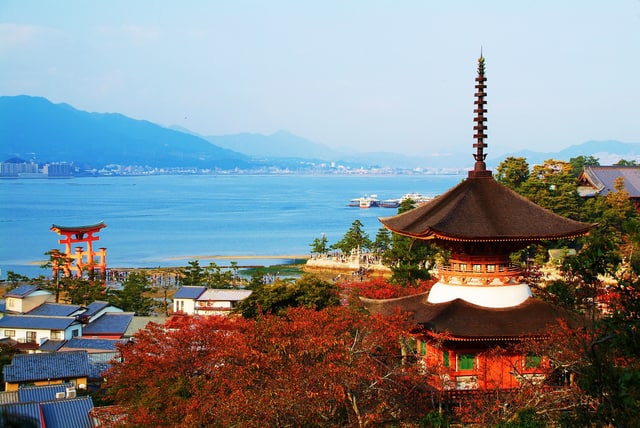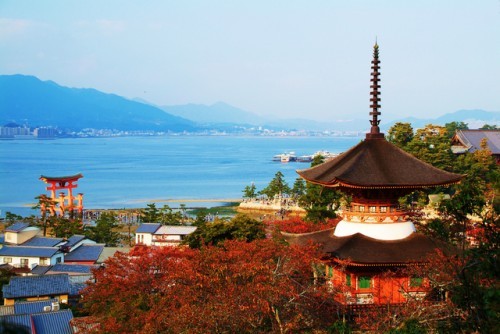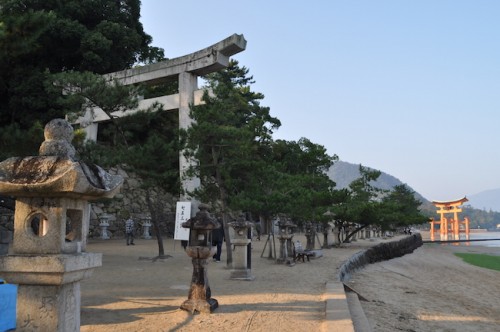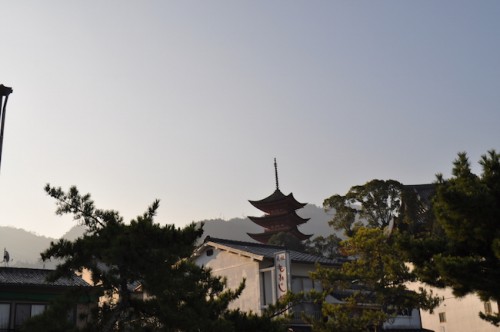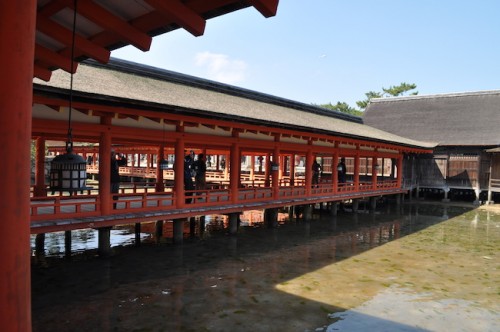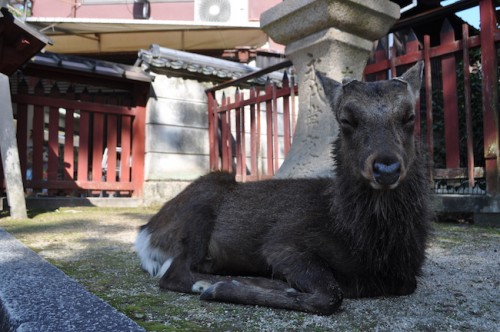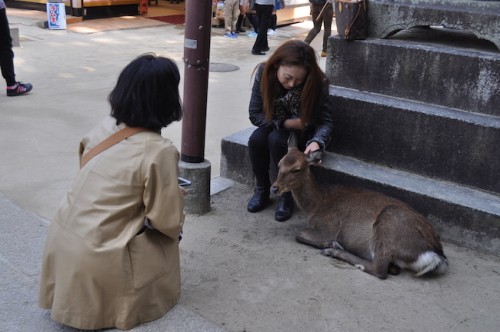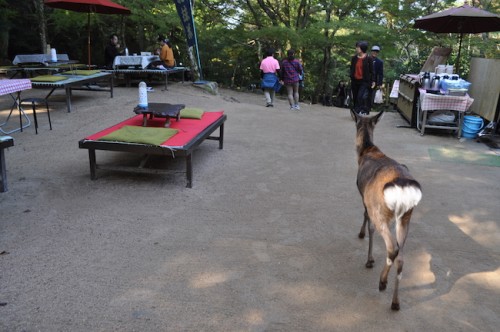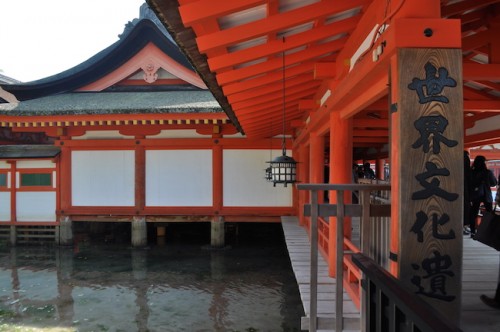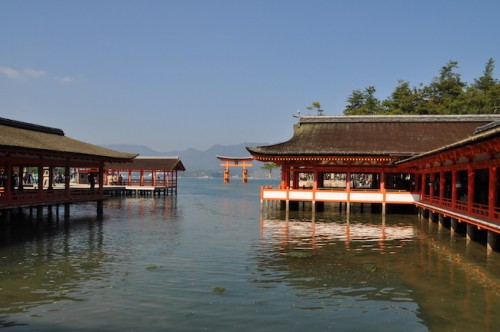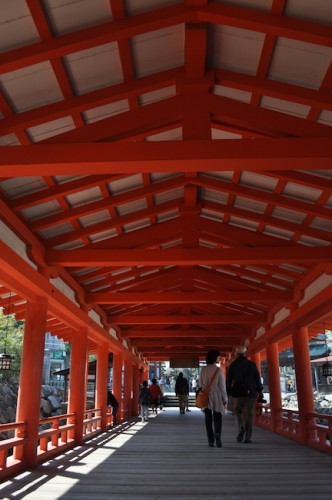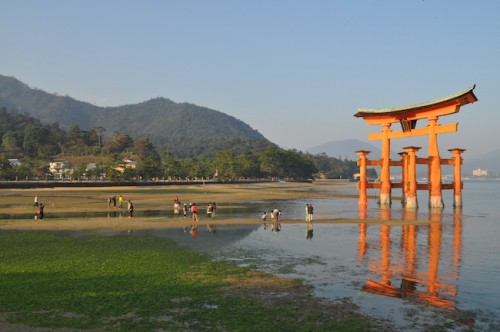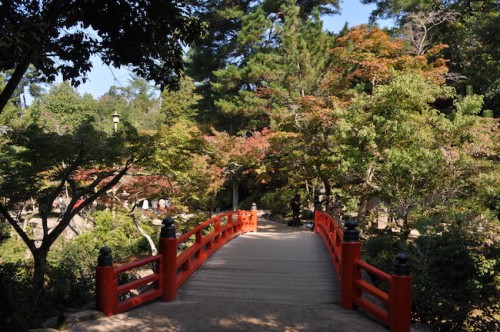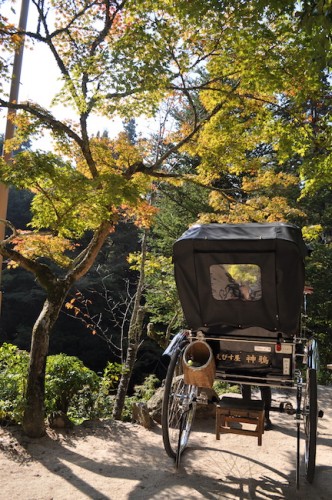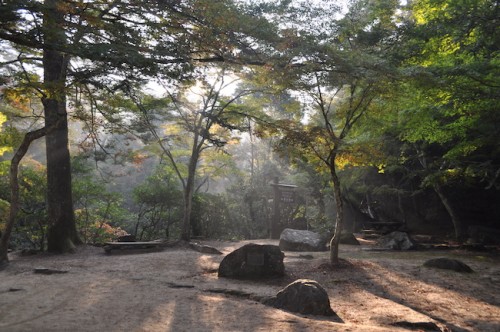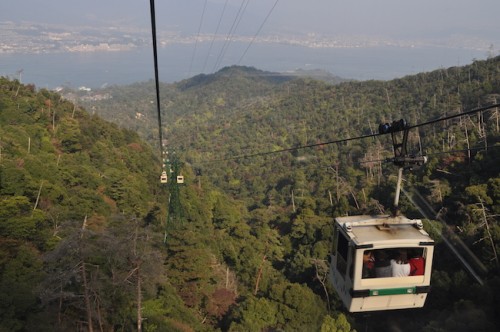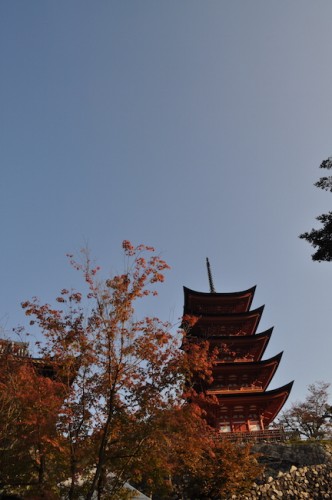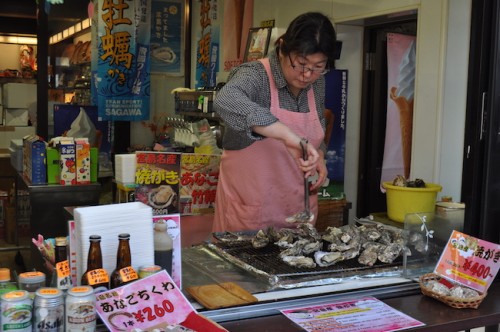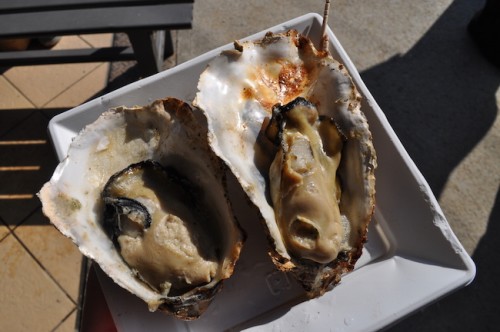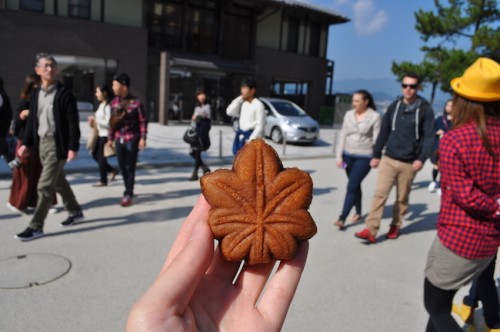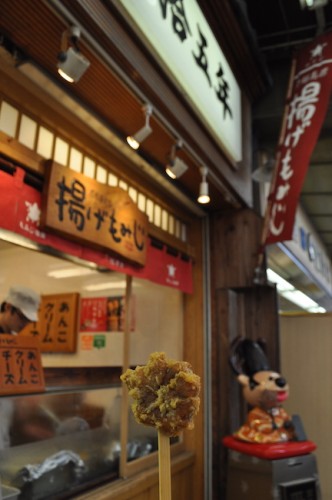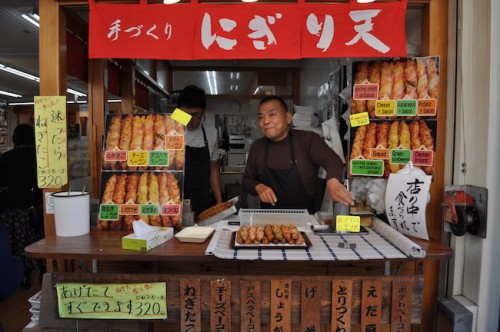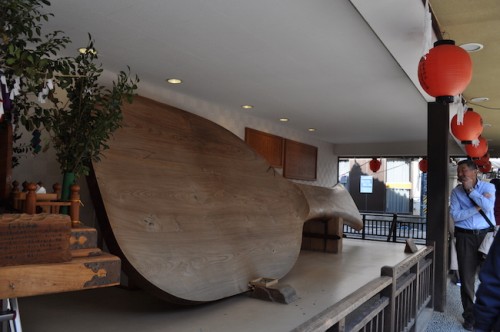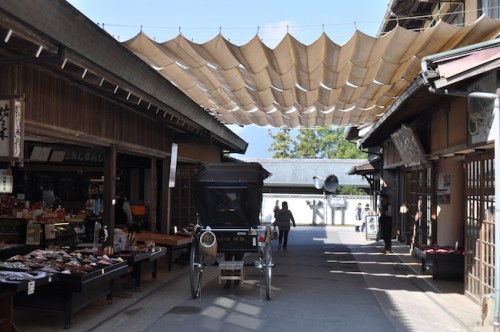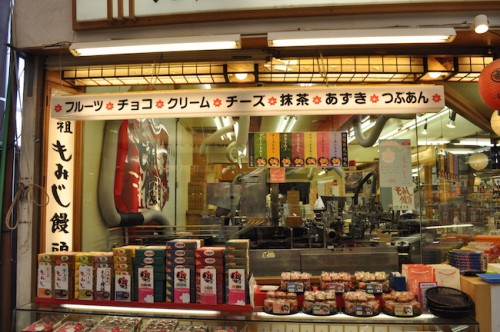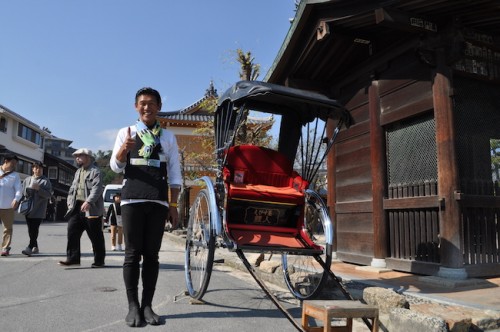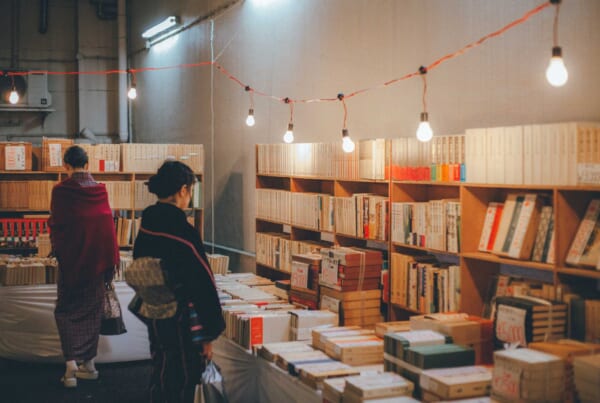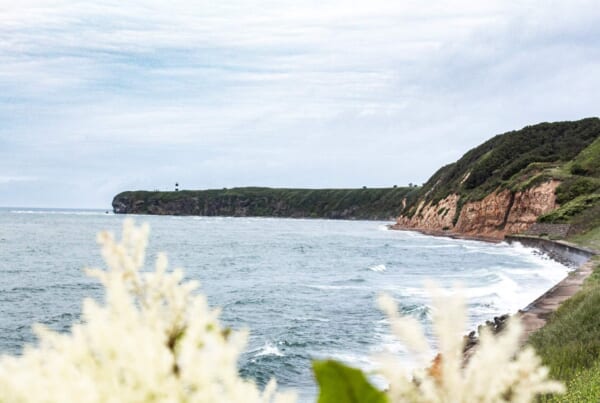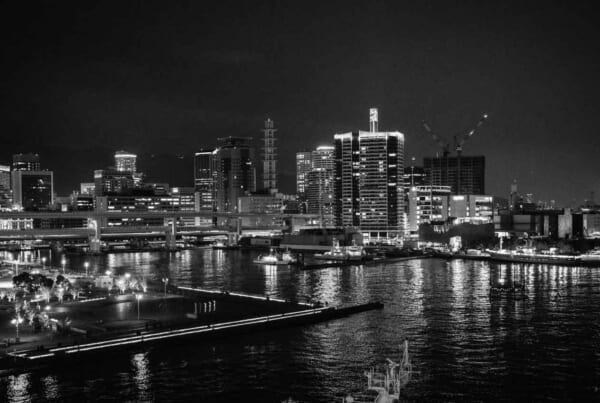Sponsored by MIYAJIMA ROPEWAY
Miyajima, an island off the coast of Hiroshima, has been an official holy mecca and sacred worship site for nearly 1,500 years, though practices date much further back. A ten minute ferry ride from the bustling modern culture of Hiroshima City takes visitors back in time to the simple ways of life on Miyajima. Architecture on the island reflects what the public knows from the Edo period in Japan, while the famous religious buildings date much older. Home to a UNESCO World Heritage site, Miyajima is a famous visiting spot for people who come through Hiroshima. There are many reasons to visit Miyajima for offerings that aren’t available in other places around the world.
Throughout the year, the famous Itsukushima Shrine and surrounding temples host events such as the Kiyomori Festival, Toka-sai, Kangen-sai, and Kikka-sai among many others to showcase the traditions and spirits of the island. There are also social festivals like the Oyster Festival and the Miyajima Water Fireworks Festival to draw in visitors to the unique beauty. Miyajima is also famous for its maple leaves, momiji (紅葉) which cover the dense forests and change into thousands of different autumn shades during the season.
Below are some information and sightseeing points you can’t miss when you’re on Miyajima.
In Miyajima #1: Your (Dear) Host
It won’t be a proper Miyajima welcome until a deer’s wet nose comes up to sniff you out for some snacks! Miyajima is home to hundreds of deers who roam freely around the island. They’re friendly, calm, and most of the time happy to take a picture with you! Don’t worry, you don’t have to know how to politely ask for a photo in Japanese. They’ll just gladly take any paper brochures out of your hand as a snack offering.
In Miyajima #2: The Main Attractions
The bright orange and mystical Itsukushima Shrine and its Torii Gate are part of the UNESCO World Heritage Site. Though it’s been rebuilt several times, the original Shinto shrine was built in the 6th century and dedicated to the three daughters of Mikoto, a god of seas and storms, and brother to the sun goddess. It was built in a unique pier like style so that worshipers could approach from mainland by boat and pass through the gate to reach the shrine. At high tide, the shrine appears to be floating and the gate is only reachable by boat. But at low tide, visitors can walk up to the gate out in the water, and see the visible pillars of the shrine below usual sea level. Though I visited during the day, a later visit will allow for gorgeous sunset views and an illumination of the Torii Gate and shrine.
The heritage site actually extends out to the backwoods of the shrine where there is a beautiful maple leaf park and mountain top hike up. The Maple Valley Park and Mt. Misen are most famous and beautiful in autumn when the leaves change colors. A hike up the mountain take about an hour, with another hour to enjoy the points of interest on the summit. If you’re not a hiker but want to enjoy the beautiful views from top, you can even take a ride on the gondola. To learn more about Mt. Misen, click on my other blog post below or right here. Not only are all these points part of the World Heritage Site, they are also part of the Setonaikai National Park, which includes all of the surrounding islands in Seto Inland Sea.
The attractions don’t end just at these famous sites. There are a few other temples and shrines that rest on the island. You can’t miss the view of the beautiful and tall five-story pagoda, for example. There’s also an aquarium, a traditional crafts center, and a museum showcasing the history and folklore of Miyajima.
In Miyajima #3: Yummy Delicacies
So close to sea, Hiroshima is famous for its oysters. On Miyajima, there are vendors throughout the main roads and alleyways that are grilling the fresh oysters right on the spot! For a few hundred yen you can buy fresh grilled oysters and a famous Hiroshima beer. They’re tasty on their own, but a little soy sauce or ponzu sauce can also do the trick! If you’re not into oysters on their own, Kakioko (カキオコ), or oyster okonomiyaki (savory pancake) is another Hiroshima delicacy. You can find these from street vendors on the island. Consider getting one of these dishes for a midday snack, or even visit one of the restaurants on the island who specialize in oyster cuisine.
Miyajima truly takes pride in its Momiji (maple leaves). Mention Miyajima to any Japanese person and they will know of momiji manju right away. Momiji manju is a sweet made out of pancake-like dough in the shape of the momiji leaf. Inside is traditionally stuffed with sweet red bean paste but nowadays, there are chocolate, custard, sweet potato and even cheese filled momiji manju. You can take this delicious dessert one step ahead and even have deep-fried version called agé momiji (揚げ紅葉) on a stick! I had a red bean paste filled one which was definitely a sweet snack that hit the spot after hiking. Speaking of deep-fried foods, you can also enjoy deep fried nigiriten (にぎり天) stuffed with different flavors. There are combinations like asparagus and bacon, onion and octopus, squid, cheese, just to name a few. I didn’t get to try one but it may tickle your fancy more than having a sweet tooth.
In Miyajima #4: The Souvenirs (Shopping)
Like most tourist spots in Japan, Miyajima is big into omiyage (gift) and souvenir shopping. What makes the shopping scene unique here is how the alleyways lined with stores take you back in time, to old Japanese style wooden homes. You can find momiji or deer printed items, wooden handicrafts, and famous shakushi. Miyajima is famous for these Shakushi (杓子) which means rice scoops. The carefully handcrafted ones make special gifts for rice lovers all around the world.
In Miyajima #5: Stay the Night
Though it’s not often heard, staying overnight on the island is also an option, if you want to enjoy it past the last ferry at 8:15pm. Here is a list of accommodations ranging from traditional and extravagant ryokans to simple and affordable guest houses. Just remember that Miyajima is a sacred island, so there isn’t much of a nightlife, if that’s what you’re looking for. Otherwise, Miyajima makes for a beautiful day trip outside of Hiroshima mainland.
Read more about Miyajima’s Mt. Misen, how to get up to the summit, and what to see and do here.
Are you traveling on a budget? Check out some of my tips and tricks for a Miyajima visit here.
<:


